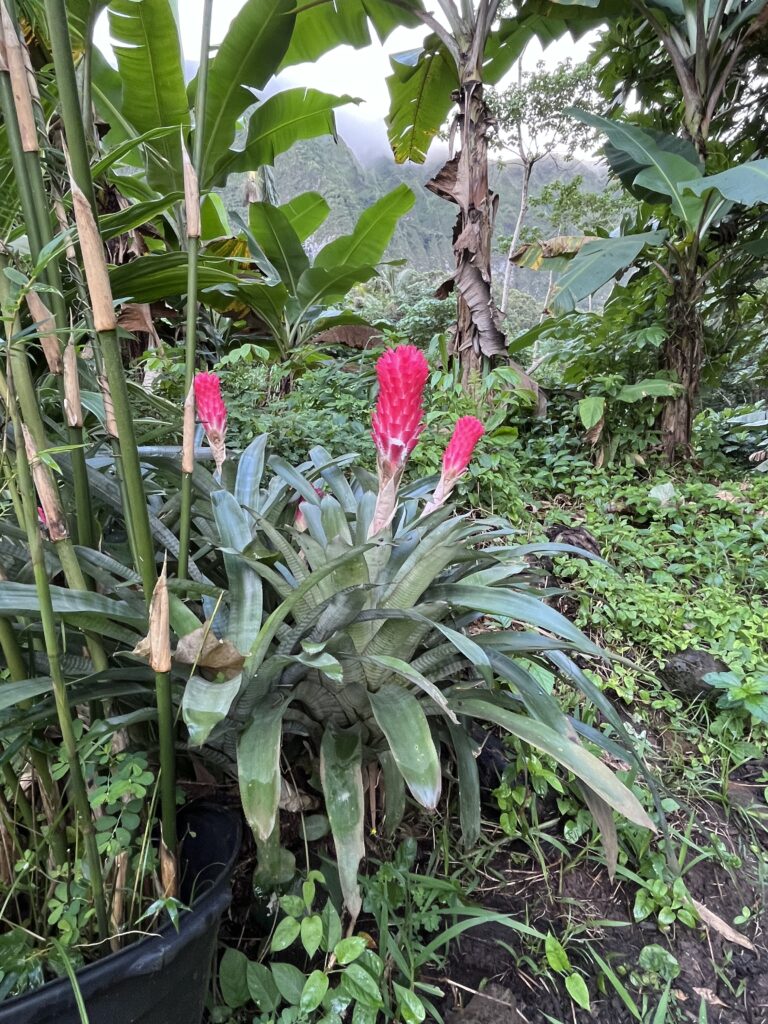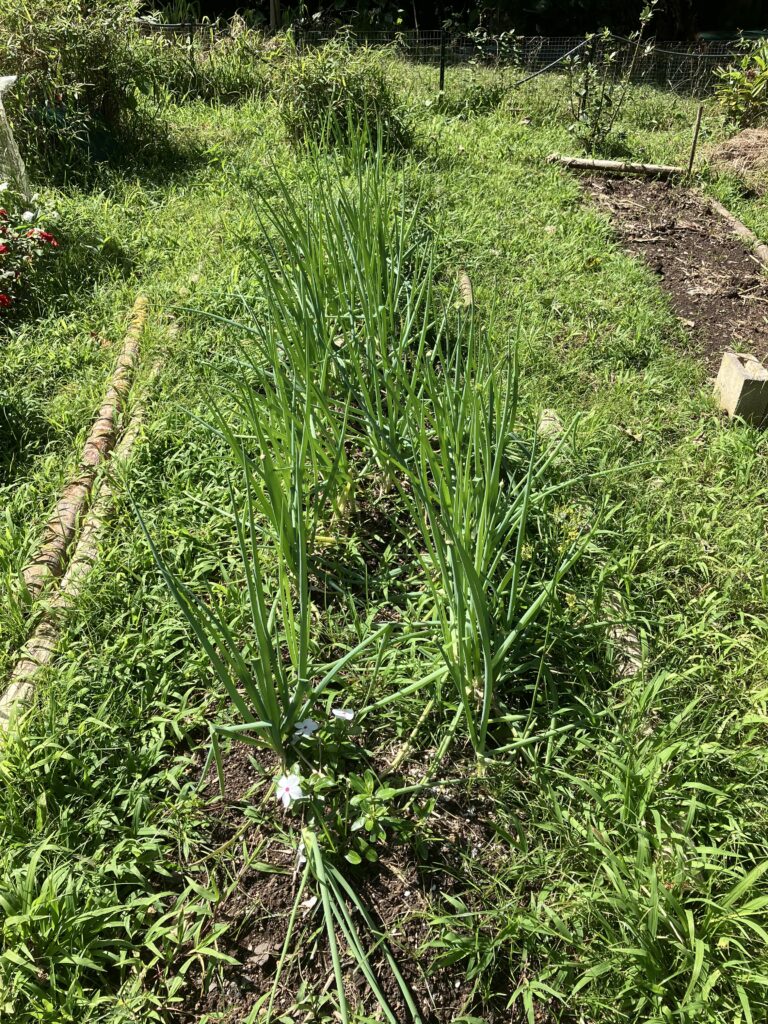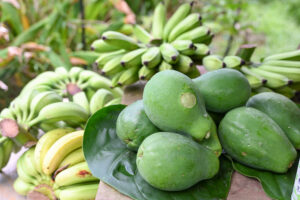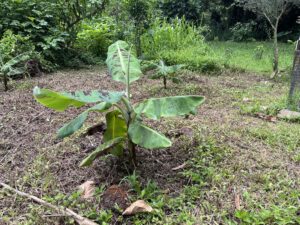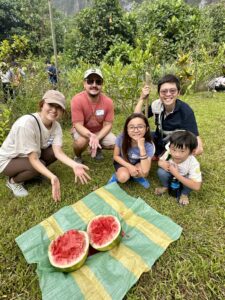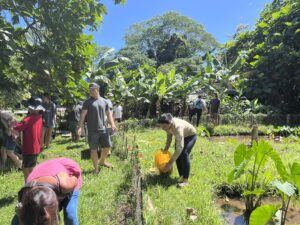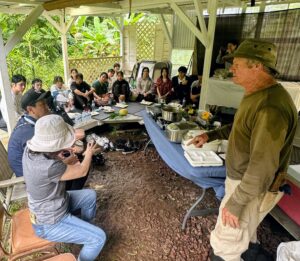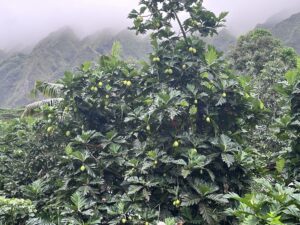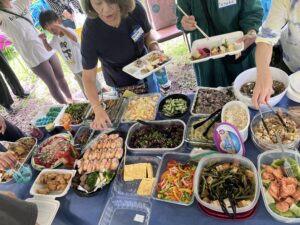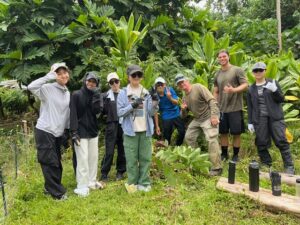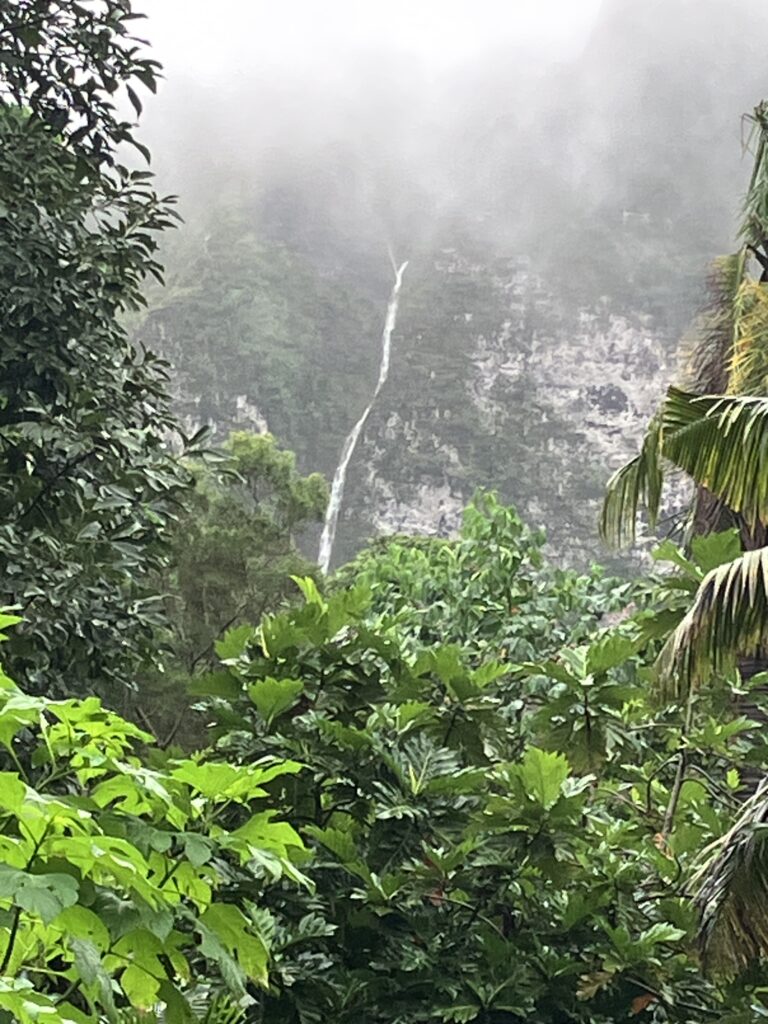
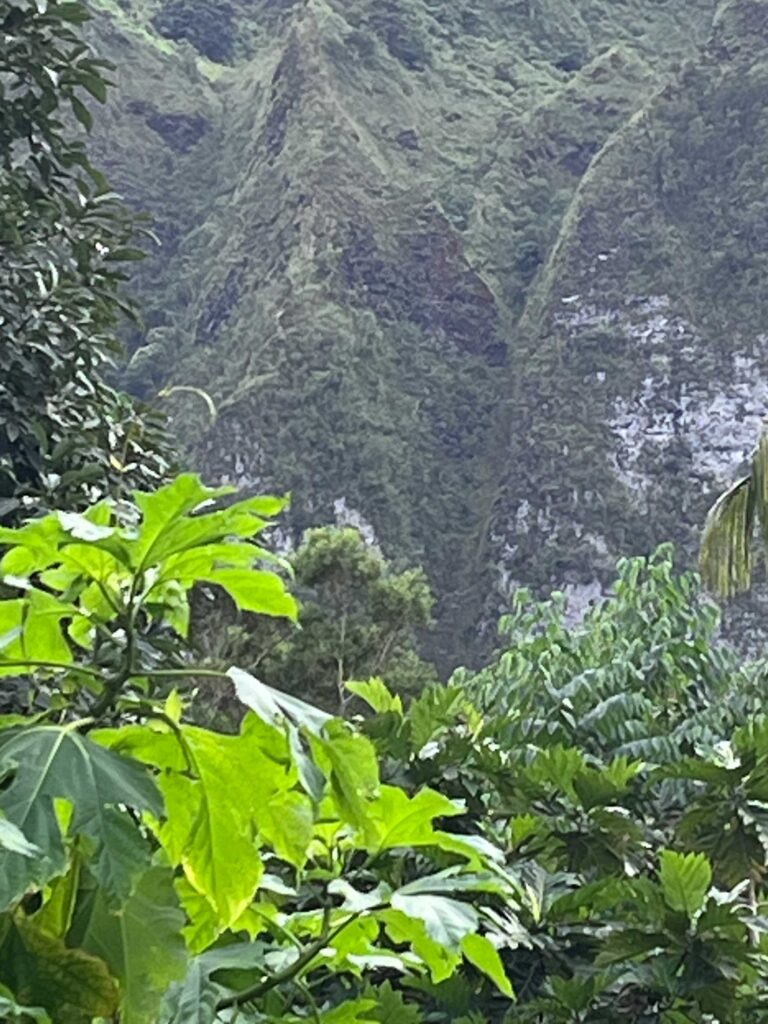
The big storm that hit Oahu last Wednesday through Friday morning knocked out power in some areas, postponed airplane arrivals and departures, and toppled trees in the backyard and roads in residential areas before finally passing over. The next day, the news reported that people got busy with cleanup throughout Honolulu and the Windward area while a great deal of debris from the flooding was piled up in the city canals. Still, there were no significant casualties…whew.
Farmers like us who work in the windward area of the island have to be especially careful about storms, heavy rains, and floods and deal with the ever-changing nature.
This time, my husband, Gary who had started preparing for the storm following the weather forecast, noticed something unusual on Monday, two days before the storm hit. The Ko’olau mountains told him that the amount of rainfall was abnormally increasing. Gary took the top-left photo from inside the farm. I was working at home in Kailua when I received that photo and the left below one, with a text message that read, “Wet!“
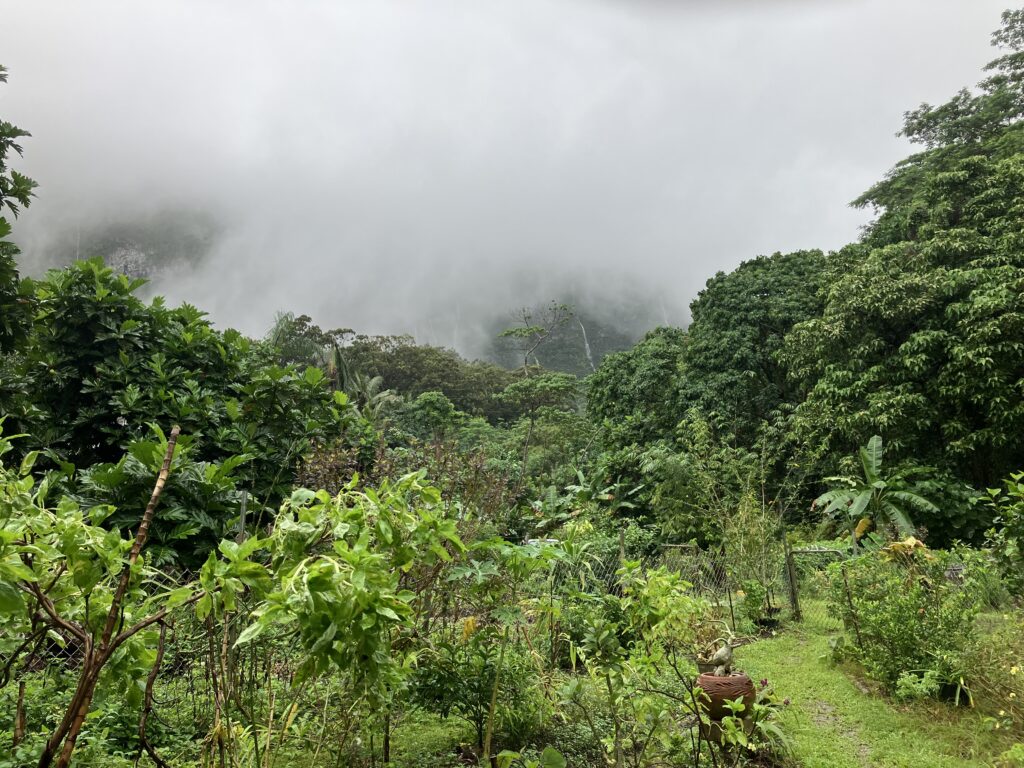
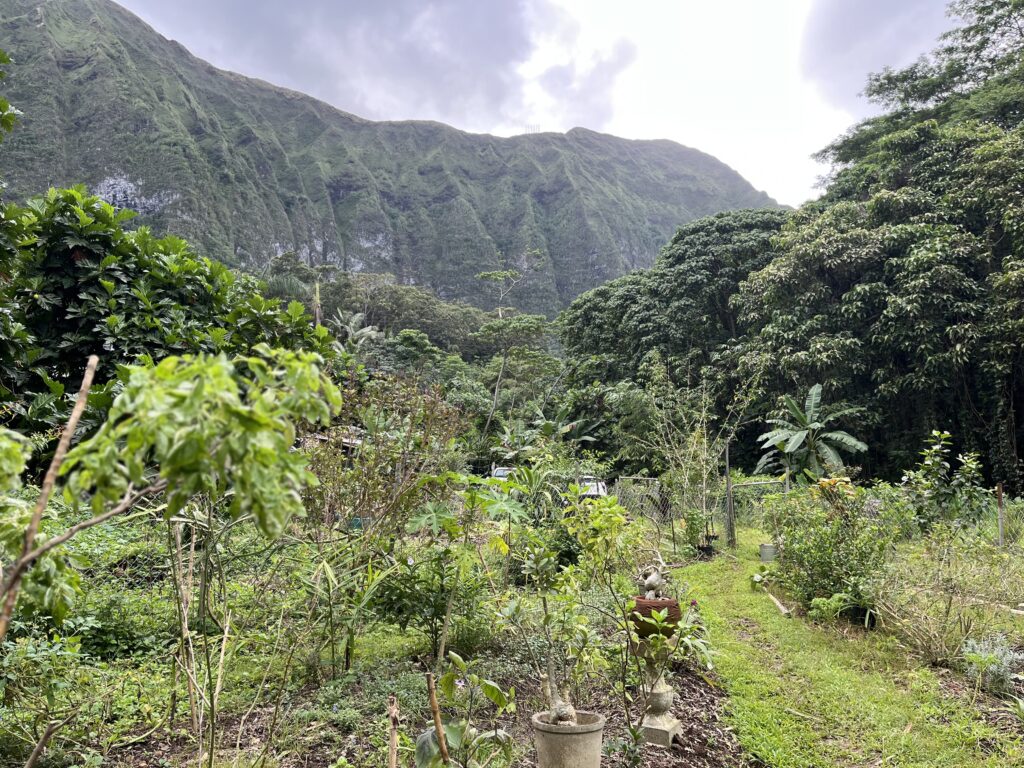
As you can see in the upper left photo, the mountain range was quickly covered by eerie rain clouds when Gary’s emergency irrigation was underway to divert water from the forest to the creek in case of flooding. Gradually, the amount of rain began to increase accompanied by heavy thunderstorms, and the green ridge line, usually a beautiful contrast of light and shadow, suddenly transformed into a large waterfall. While the rainfall on the plains and town had not yet intensified, Gary hastily took all possible precautions on our farm in the forest.
Since the storm hit the island on Wednesday, torrential rain, strong winds, and emergency flood warnings have rung out repeatedly on everyone’s cell phones throughout Oahu. We were worried about the farm, but thanks to the trees that had protected the forest for many years and blocked the strong winds this time, too, and thanks to the emergency irrigation channel Gary had built on the farm, the chicken coops and vegetables were not blown away or washed away.
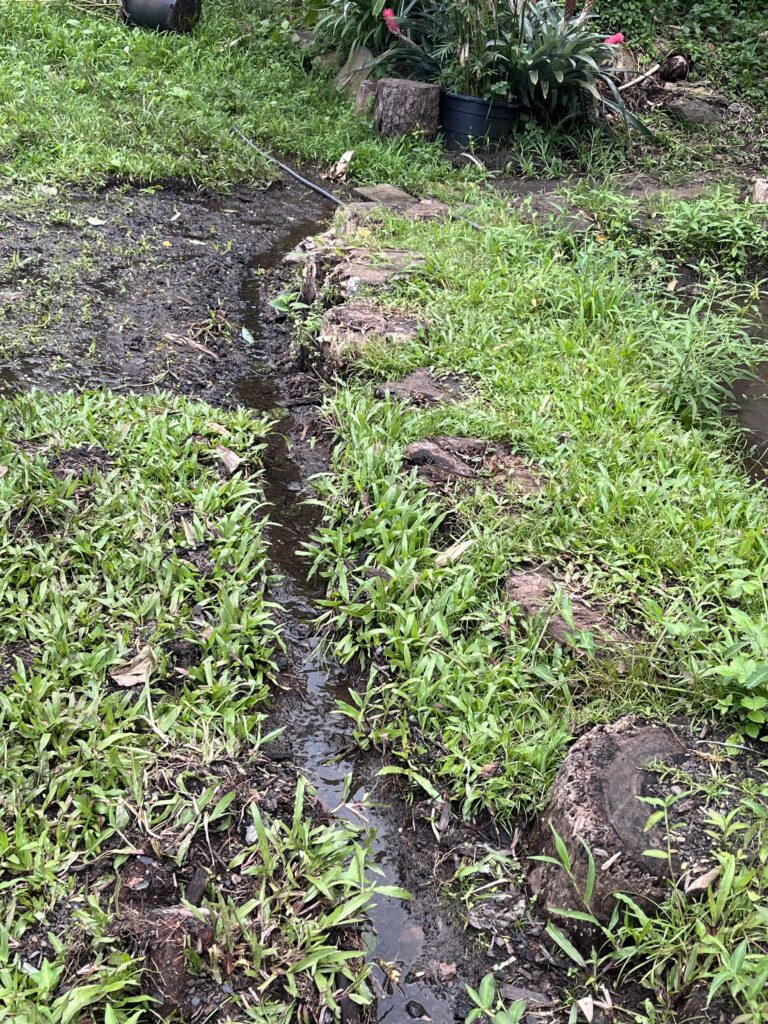
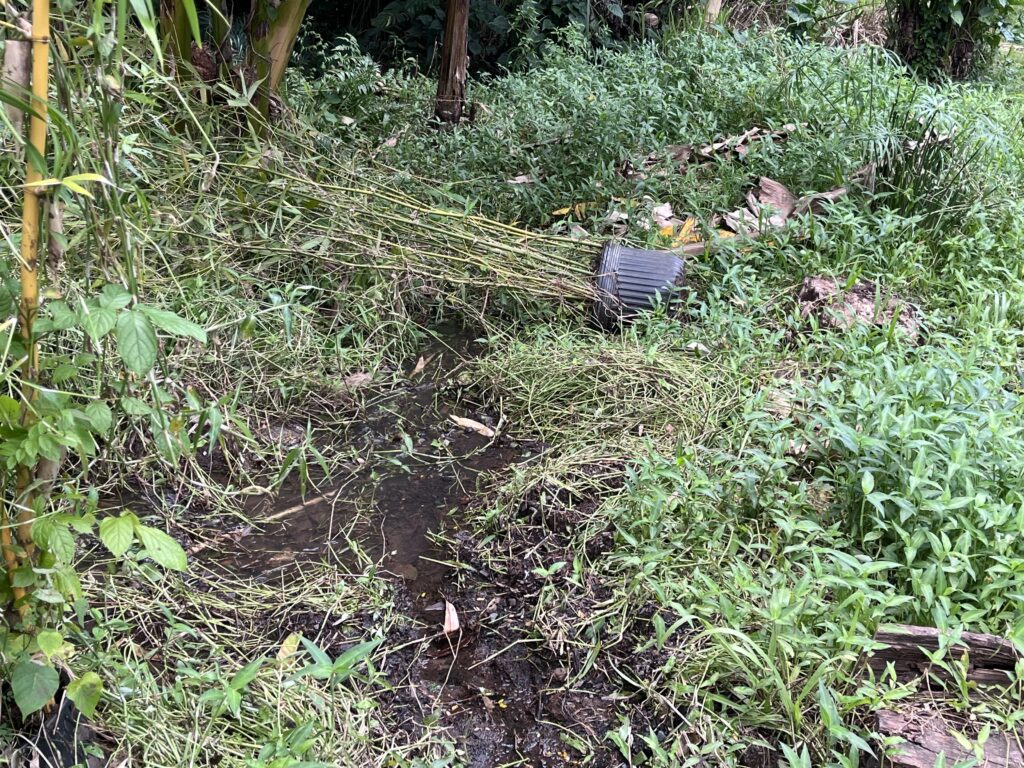
For residents of the small islands in the central Pacific Ocean, storm, rain, and flood warnings are an annual event from November through February, the rainy season, and August through September, the hurricane season. However, storms and damage vary yearly, and there is no getting used to them. Each time, we feel the threat of nature severely, and after the storm passes, we look up at the clear sky and have our hands together in gratefulness for our safe survival.
(Photo: Vegetables and flowers in the field that survived the storm)
